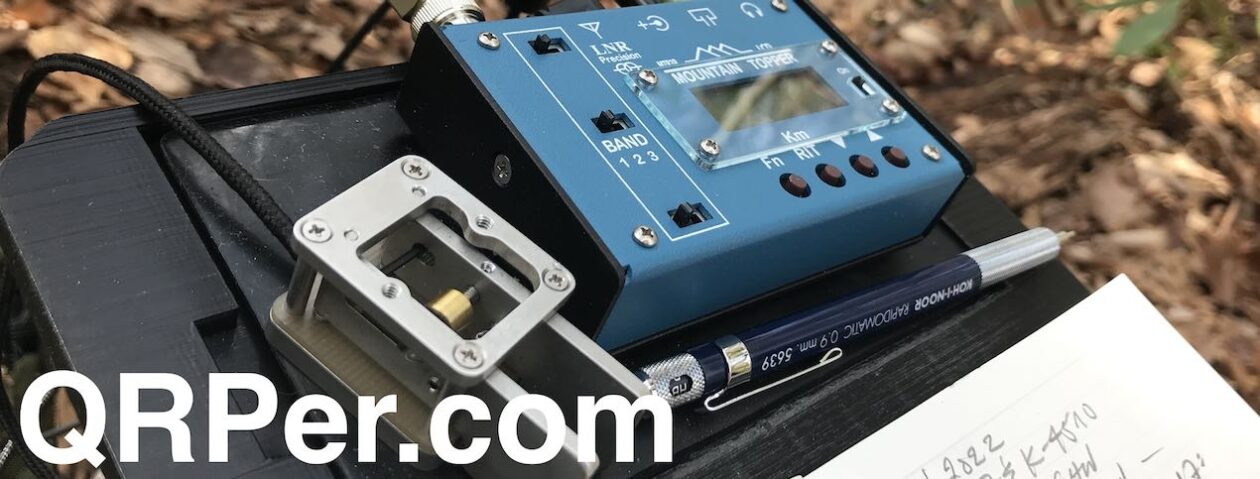by Thomas (DM1TBE)
Some time before Easter I noticed that I am close to 1000 QSOs at my favourite place at the “Kalte Feld”, a POTA and SOTA activation zone and would soon qualify for the POTA Kilo Award. I like the Kalte Feld for the quiet, spacious area with a hut that is vending traditional basic food and beverages – which in Germany usually means good beer and different sausage types (and other stuff – to be fair). I already wrote some articles about the history of the area and my activations.
- Quick test of my new SOTAbeams Band Hopper III antenna at a POTA/SOTA location
- Guest Field Report: Germany has a new POTA activator!
- Quick test of a homemade 20-meter band antenna at a beautiful POTA location
The conditions at the activation zone are quite good. I have made 2 activations there with more than 100 QSOs (and many smaller), so I thought it should not be too difficult to complete the required QSOs in one day.
DAY 1
The weather for the Easter weekend was expected to be one of the first warm and sunny days this year. So, on Easter Sunday, I headed to the area to get the last missing 49 QSOs for my POTA Kilo Award. Easter hiking has a centuries long history in Germany. This and the nice weather made the area quite crowded. The close airfield for gliders was busy and the whole time while operating there they were in the air above.
The barbecue places and outdoor seating around the mountain hut were busy but happily the bench some meters away that I am normally using, was still available.
I wanted to start with an end-fed half-wave antenna for the 20m band, tied to a 10 meter (33 ft) fiberglass mast. This is a very easy and quick to deploy antenna and I like it, especially if there is not too much space for antennas with a larger footprint. Since it’s a straight vertical, it also has a higher chance for DX contacts – when the conditions allow that. The antenna is Open Hardware and you can find further details on GitHub.
The mast was tied to the bench and the antenna was raised. Besides the comfort, the possibility to tie a mast to it is the second reason why I am always looking for benches.
The conditions were far from being perfect, and it took me 40 minutes to get 18 CW QSOs on the 20-meter band. Switching to SSB wasn’t a big help either, and I soon gave up with only 3 additional SSB QSOs in the log.
I had brought another antenna with me that I wanted to try. The 10 meter (33 Ft) fiberglass mast also has the perfect height for a ¼ wave vertical on the 40-meter band. So I cut 5 wires to a length of about 10 meters (33 ft) and connected 4 of them together at one end with a cable lug and attached another cable lug to the vertical element.
I then used the basis of the JPC-7 antenna for the coax plug and for connecting the vertical element and the radials. There are a lot of articles and videos about ¼ wave vertical antennas. But the information is usually about either elevated and resonant radials or random length ground radials. I wanted to have resonant radials, but I could not be bothered with carrying all the stuff nearly 2 miles to a summit for elevating 4 x 10m (33 ft) wires, so I simply left them on the ground.
My idea was to try a full size vertical for the 40 meters band with resonant radials that still is portable and fits to my existing equipment.
The SWR was quite nice being close to 1.0 : 1 at the CW portion of the band, so I started operating.
The conditions were similarly difficult as on the 20-meter band. It took me 25 minutes for another 18 QSOs.
As it became increasingly cloudy, I checked on my mobile and saw that rain was approaching fast. Since I had roughly 2km or 1.5 miles descent ahead of me, I stopped abruptly with just 10 QSOs short of the POTA Kilo Award.
A bit disappointed, I called it a day.
DAY 2
I could not leave the missing 10 QSOs for long. The very next day, Easter Monday, was a public holiday in Germany. And as the weather started nice, I again made my way to the activation zone. Continue reading Experimenting My Way to the POTA Kilo Award


















